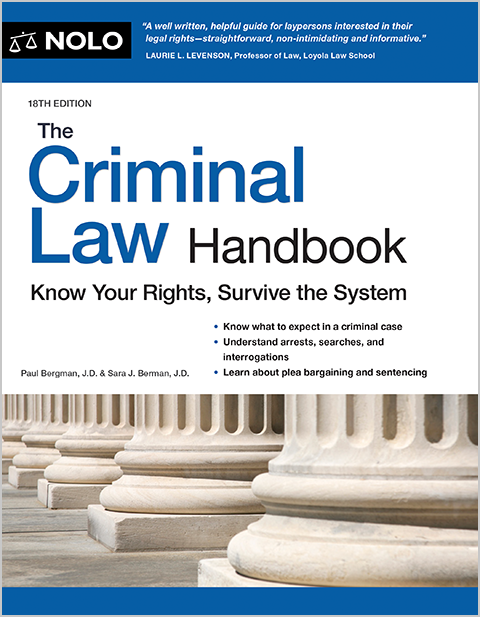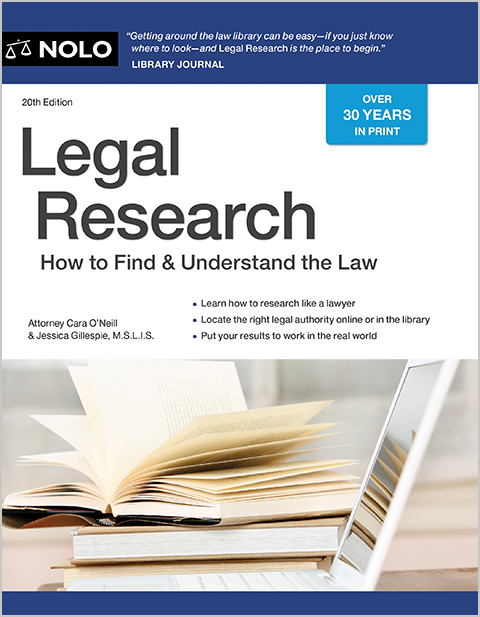A guide for what you can (and can't) do when organizing or joining a protest and what to do when you think your rights have been violated.

Protesting is fundamental to the American spirit—from the Boston Tea Party in 1773 to the March on Washington in 1963 to the Women's March in 2017, people have marched for equality, justice, and to preserve democratic ideals in cities and towns across the nation.
As of June 2025, thousands of protesters have taken to the streets to protest ICE immigration enforcement operations across the country. Millions more joined "No Kings" protests on June 14 in response to the military parade President Trump hosted on his birthday.
If you plan to protest or counterprotest now or in the future, use this guide to understand your rights and risks.
- What Rights Do Protesters Have?
- Can the Government Restrict My Right to Protest?
- Where Can I Protest?
- Do I Need a Permit to Protest?
- What Can I Do at a Protest?
- What Police Can and Can't Do at a Protest
- Can I Take Photos and Video of the Police at a Protest?
- Do Counterprotesters Have Free Speech Rights?
- How to Stay Safe at a Protest
- What to Do If You Believe Your Rights Have Been Violated
What Rights Do Protesters Have?
Your right to peacefully protest is rooted in the First Amendment to the U.S. Constitution, which guarantees:
- freedom of speech
- freedom of assembly (the right to gather), and
- freedom to petition the government for redress of grievances (ask the government to change).
You also have the right to be free from unlawful arrest and excessive force on the part of police, as guaranteed by the Fourth and 14th Amendments.
Can the Government Restrict My Right to Protest?
The government can set reasonable limits on where, when, and how protests happen, so long as the limits are:
- content-neutral (not based on the protesters' message)
- serve a public interest (like safety or traffic control), and
- allow for alternative ways for protesters to get their message out.
For example, the government can probably restrict a protest involving amplified speech and music during the hours of 4 a.m. to 6 a.m., but can't put a blanket restriction on all protests against President Trump's immigration policies.
Where Can I Protest?
Your right to protest is most protected in public places like parks, sidewalks, and streets. Courts call these places "traditional public forums."
You might also have the right to protest on other public properties, such as plazas in front of government buildings, but only if you aren't blocking access or interfering with government business.
The Supreme Court has ruled that no one has a right to protest on military bases, not even members of the military. But you might be able to protest on a public sidewalk outside a military base. (United States v. Apel, 571 U.S. 359, 373 (2014).)
You don't have the right to protest on private property without permission from the property owner. If you protest on private property, the owner can ask you to leave, and you could potentially face trespassing charges if you remain on the property.
Do I Need a Permit to Protest?
You don't need a permit to march on public sidewalks, hand out flyers, or gather in small groups, so long as you don't obstruct traffic. You might need a permit if a lot of people plan to attend your demonstration or if it requires a street closure or sound equipment (such as loudspeakers, bullhorns). Each city and county has its own rules for permits. Check your local permit ordinances for instructions on when and how to apply.
What Can I Do at a Protest?
You have a right to passionately express yourself at a protest, even if your message is controversial or offensive to some people. People at protests often march with signs, chant, sing, and distribute flyers.
To be lawful, protests must be peaceful, which means protesters can't:
- commit violence or threaten violence
- destroy property (vandalize)
- steal property (loot)
- burn property
- throw objects
- block ambulances, fire trucks, and police vehicles
- block access to sidewalks or buildings
- block traffic without a permit
- disrupt counterprotests (see below), or
- engage in speech that is obscene, defamatory, or likely to incite an immediate, dangerous disturbance.
On the ground at a fiery protest, the line between peaceful and unlawful protesting can be harder to draw than you might think. Police often respond aggressively to all protesters when only a few have smashed windows or looted stores. Some protesters chant, "peaceful protest," even while others throw bottles at police.
You're in control of your behavior at a protest, but you can't control or predict how other people will act or how law enforcement will react. All you can do is know your rights, when to assert them, and what to do if they are violated (see below).
What Police Can and Can't Do at a Protest
Law enforcement has a role to play at protests. They are supposed to facilitate your right to protest while ensuring public safety.
Officers can:
- enforce reasonable restrictions on where, when, and how protests happen (such as banning items that can be used as weapons or creating buffer zones between opposing groups) as long as restrictions don't discriminate based on viewpoint
- monitor protest activities, including attending planning meetings undercover
- attend public protests and photograph and film protesters
- arrest individual protesters when probable cause exists
- order protesters to disperse (leave) if the gathering interferes with traffic, threatens public safety, or presents a clear and present danger of a riot, and
- use force only when necessary to defend against real threats to public safety (the use of force must be targeted and proportionate).
Officers can't:
- detain, search, arrest, or use force against peaceful protesters
- disperse a protest without good cause
- arrest protesters after a dispersal order without giving them enough time and an exit route to leave
- target protesters based on the protesters' message
- arbitrarily arrest large groups of protesters for crimes like breach of peace as a way of suppressing their First Amendment rights
- use excessive force, and
- use tear gas or rubber bullets as a first response (laws and protocols vary from state to state on the use of crowd control weapons).
Ideally, police should work with protest organizers to reduce tension and protect your right to protest while keeping the community safe. But you can't assume all officers will respect your rights even after you assert them.
Can I Take Photos and Video of the Police at a Protest?
When you're lawfully present in a public space, like a street or park, you have a right to take photos and film anything in plain view, including police officers. Some states have stricter rules about audio recording police without consent.
Officers can't order you to stop filming them just because they don't like it, but they can order you to stop if you're actually interfering with their duties. Officers can't take your device or delete your footage without a search warrant.
You can reduce your risk by taking pictures and videos from a safe distance and not interacting with the police while you're recording.
Do Counterprotesters Have Free Speech Rights?
Counterprotesters have the same constitutional rights—to gather and voice their opinions—as any other protesters. Police must treat protesters and counterprotesters equally.
Counterprotesters are also, of course, bound by the same restrictions as protesters. They must be peaceful and steer clear of tactics like dismantling barriers, blocking or physically assaulting protesters, and using chemical irritants.
The presence of counterprotesters is likely to heighten tensions with the police. Officers may separate hostile groups to prevent violence, but the groups should still be allowed to see and hear each other so that neither group's speech is restricted.
How to Stay Safe at a Protest
Protests can be invigorating, inspiring, and totally unpredictable. Even if you show up with good intentions, things can go awry.
The National Resources Defense Council (NRDC) publishes a "How to Protest Safely" guide that includes the following tips:
- research the protest you plan to attend
- buddy up (go to the protest with a friend or let someone know where you'll be and when you expect to be home)
- pack a bag with supplies (bring plenty of snacks, water, medicine, and cash)
- be mindful of your phone settings
- dress appropriately (comfortable shoes, long sleeves and pants, glasses instead of contacts in case you're pepper sprayed)
- know your rights and what to expect from law enforcement
- follow the protest organizers' lead (stick to their routes, respect their requests, let them speak to the media)
- be vigilant (avoid engaging with counterprotesters and be prepared to leave quickly if a peaceful protest escalates to violence), and
- protect protesters' privacy rights (don't post pictures of other protesters without their permission).
What to Do If You Believe Your Rights Have Been Violated
As noted, just because you have a constitutional right to protest doesn't guarantee that the police, National Guard, or active duty troops won't interfere with your right.
Here are some tips for how to interact with the law enforcement at a protest and what to do if you believe your rights have been violated:
- Stay calm if you're detained or arrested. If an officer stops you, ask if you're being detained. If the answer is no, calmly walk away. If the answer is yes, don't argue or resist even if you think the arrest is bogus. Tell the officer you're exercising your right to remain silent and ask to have a lawyer present for any questioning.
- Don't consent to a search. If an officer asks to search you or your belongings, you can say no.
- Write down everything you remember. After the protest, write down what happened and who was there, including the names and badge numbers of involved officers and contact information for all witnesses.
- Document your injuries. If you have bruises, scrapes, or other injuries, have someone take pictures of them. If you have any reason to believe you need medical treatment, get it as soon as possible. Medical records can be powerful evidence if you have to defend yourself against criminal charges or file a civil rights lawsuit against the police.
- File a complaint. You can file a written police misconduct complaint with a law enforcement agency's internal affairs division or civilian complaint board. Your complaint might lead to an officer being disciplined, and could be used as evidence in future civil and criminal litigation involving the officer.
- Contact a legal organization. The National Lawyers Guild or your local ACLU chapter may offer resources and guidance if you've been arrested or your right to protest has been unlawfully restricted.
- What Rights Do Protesters Have?
- Can the Government Restrict My Right to Protest?
- Where Can I Protest?
- Do I Need a Permit to Protest?
- What Can I Do at a Protest?
- What Police Can and Can’t Do at a Protest
- Can I Take Photos and Video of the Police at a Protest?
- Do Counterprotesters Have Free Speech Rights?
- How to Stay Safe at a Protest
- What to Do If You Believe Your Rights Have Been Violated

